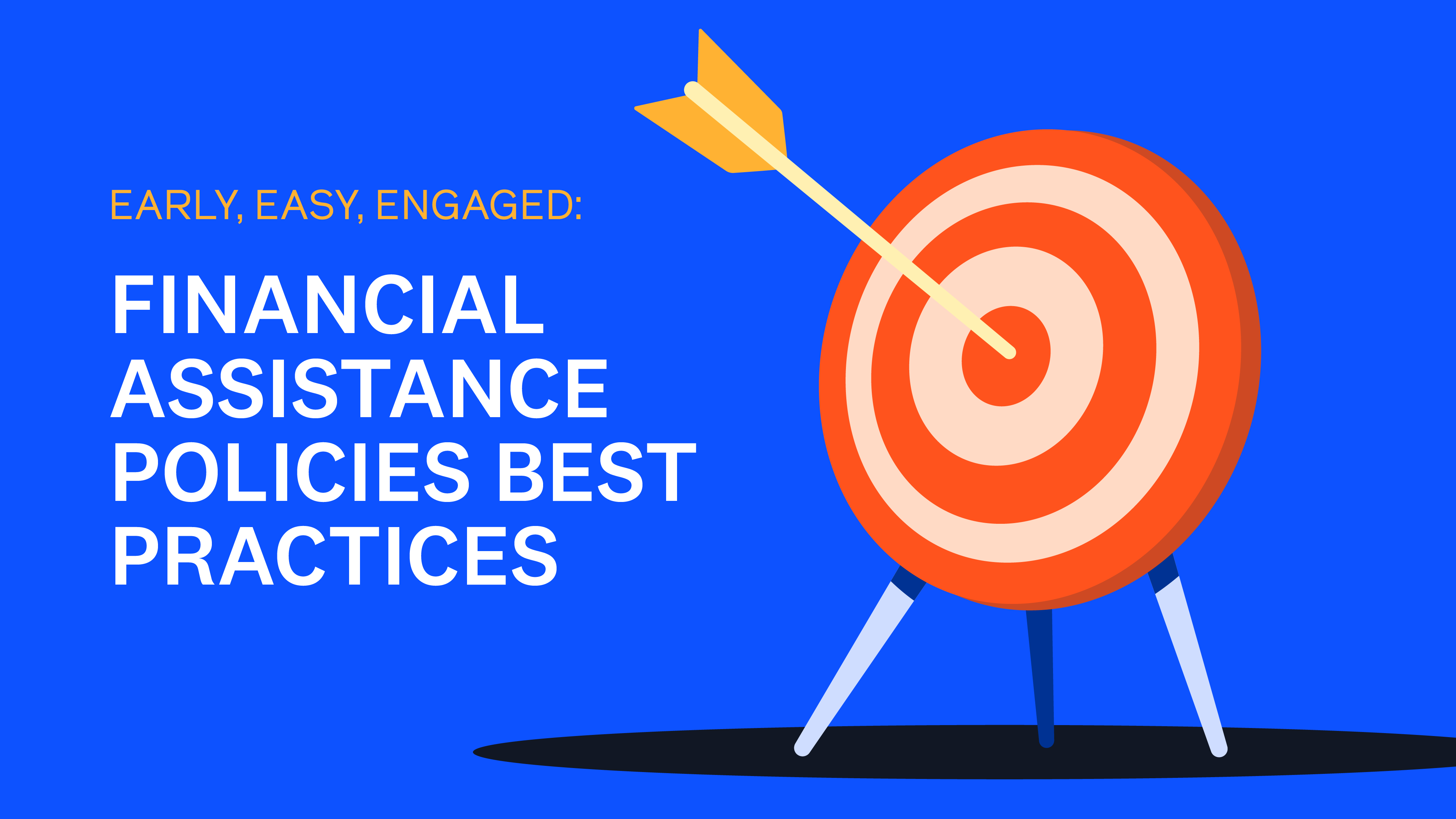Financial assistance policies (FAP)—sometimes called charity care—are an important way hospitals and other providers can help eligible patients cover the cost of medical care. While federal law requires tax-exempt hospitals to provide a financial assistance policy, the guidelines are broad. This is intended to give hospitals flexibility to meet the needs of their local population and service area, but omitting specific guidance on things like eligibility floors leaves patients with uneven access.1 Indeed, FAPs can vary greatly by state and even by institution, meaning someone could be eligible for assistance at one hospital and denied at another down the street. As the financial assistance landscape continues to shift, this set of best practices is intended to help provide guardrails that are easy to implement while also promoting more equitable access to care. Financial assistance policies should be worded in a way that invites engagement, eases patient concerns, and encourages patients not to defer future care.
We held a series of conversations with patients, revenue cycle leaders, community leaders, and other stakeholders to develop a list best practices for patients, institutions, and policymakers. When financial assistance policies work appropriately, the entire system benefits and can focus on the overall mission—caring for patients.
The guiding principles for FAP should be:
Early
No one should receive a bill for something that should be covered by financial assistance or other coverage programs— meaning patients are presumptively screened for financial assistance eligibility and uninsured patients are screened for coverage programs before being sent a bill:
- When presumptive eligibility screening is not feasible, the patient should be presented with financial assistance information as early as possible—either at pre-registration or check in on the day of their service,
- If presumptive eligibility determination is not possible through a software vendor, health systems should honor other income-verified government programs (such as SNAP and Medicaid) or participation in sliding-scale health care programs (such as free clinics or Federally Qualified Health Centers) as a streamlined pathway to financial assistance, and
- Patients should be notified of their eligibility determination as soon as it is known, whether through application or presumptive means.
Easy
Financial assistance applications have no barriers, meaning they’re both simple and easy to complete, and they only ask for the information they need to determine eligibility. This means:
- Patients can access them in their primary language with minimal clicks from their cell phone or computer,
- Patients are offered assistance in completing the form at the same time they receive it, and
- The applications are free from requests for information that is not (and should not) be used to determine eligibility, like lists of assets (e.g., homes, cars, retirements funds). Savings are an important way for families to increase financial security and no one should be forced to sell their car in order to receive medical care. If assets are used, the threshold should be high—such as with Washington’s State Charity Care law.
Engaged
Hospitals and providers should be active participants in the financial assistance process. This means:
- Adopting a “no wrong door” policy on financial assistance applications—if a patient emails someone outside the billing department asking for help with payment, every staff person should know where to direct them,
- Information on financial assistance should be widely publicized, including on patient statements, in patient portals, on conspicuous signage, on treatment summaries, and in verbal communications. Everyone who is eligible should be aware financial assistance is available, and
- All clinicians with hospital privileges should be required to participate in hospital financial assistance programs.
1 While federal law does not specify eligibility floors, many states have developed their own eligibility requirements.
Financial Assistance Policy Priorities
- Presumptive eligibility
Every patient—both uninsured and insured—should be presumptively screened for financial assistance. Screening patients before they receive a bill helps reduce patient stress by making sure they don’t get a bill they can’t afford, reduces workload for revenue cycle staff by making sure they don’t pursue people who can’t pay, and helps identify opportunities for connecting uninsured patients with coverage. Note that patients should still have the option to complete a digital or hard-copy application, as presumptive eligibility screening still may miss eligible individuals.
- Review eligibility floors
Roughly 1 in 3 hospitals set the maximum income eligibility for financial assistance at 200% of the federal poverty level – or $50,000/year for a family of three. Providing a more generous eligibility floor (such as placing the top end of the range at 400-600% FPL) reviewed annually for cost of living and inflation means more people can access care without fear of medical debt. Such an assessment can be particularly helpful for hospitals in rural areas, as it allows them to determine the best range for the needs in their community. These decisions can have an impact on hospital solvency, and in those cases state governments should consider ways to provide support (such as financial stabilization grants and expanding Medicaid eligibility) that enables hospitals to provide financial assistance without risking closure.
- Continuous and consistent eligibility
Once someone is determined eligible for financial assistance, that eligibility should last at least the next 12 months. Continuous eligibility reduces workload for overtaxed revenue cycle staff and reduces stress for patients. Additionally, if someone qualifies for financial assistance at one satellite hospital, that coverage should be extended across the entire system. Patients should always be notified of their eligibility determination—if you don’t know you are eligible for financial assistance, you will never use it. If patients are uninsured, the notification process is also an excellent time for staff to connect patients with information on insurance coverage. Charity care should never be a substitute for health insurance.
- Retroactive eligibility
If a patient is determined eligible for free care, that eligibility should be extended retroactively to outstanding medical bills and payment plans they have with the provider. This could include discounting or cancelling prior balances.
- Simplification
Reducing the complexity and amount of forms helps ease administrative burden for both patients and staff; states like Maryland and Colorado have taken this approach, creating uniform, plain-language financial assistance applications required to be used by all hospitals. These forms—also available online—make it easier for all parties involved. Uniform applications also make it much easier for community-based organizations to act as helpers—staff only need to learn one form, meaning they have much greater capacity to act as an outside resource. A corollary to this is removing asset tests and other unnecessary information that is a barrier to application.
- Extraordinary collection actions
These actions should never be used for anyone eligible for financial assistance. Patients should never be sued by health care providers or their revenue cycle vendors. Wages, tax refunds, and disability benefits should be protected from garnishment. Patients should also receive written and verbal notice that extraordinary collection actions may be undertaken for outstanding bills at least 30 days in advance; notifications should include an option for patients to alert providers or vendors that their financial status has changed, and that they’d like to be screened for financial assistance.

